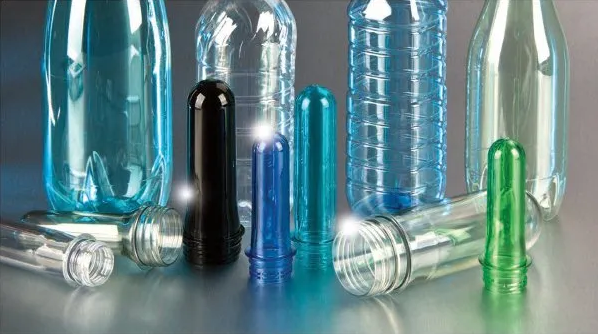
Yes, PET (Polyethylene Terephthalate) can be injection molded. PET is a versatile thermoplastic polymer used widely in packaging, textiles, and engineering applications due to its excellent mechanical and thermal properties, chemical resistance, and clarity. Here are key considerations and the process involved in injection molding PET:
Key Considerations for Injection Molding PET
1. Material Properties
- Crystallinity: PET can exist in both amorphous and crystalline forms, affecting its mechanical properties and transparency.
- Moisture Sensitivity: PET is hygroscopic and must be thoroughly dried before processing to avoid hydrolysis, which can degrade its properties.
2. Processing Temperatures
- Drying Temperature: PET must be dried at 150°C (302°F) for 4-6 hours to reduce the moisture content to below 0.02%.
- Barrel Temperature: The barrel temperature typically ranges from 265°C to 290°C (509°F to 554°F).
- Mold Temperature: The mold temperature should be maintained between 80°C and 120°C (176°F to 248°F) to control the crystallinity of the final part.
[elementor-template id=”4330″]
3. Injection Molding Machine
- High Temperature Capability: The machine must handle the high processing temperatures required for PET.
- Screw Design: A general-purpose screw with a compression ratio of 2.5:1 to 3.0:1 is recommended for PET.
- Clamping Force: Ensure the machine has sufficient clamping force to handle the specific mold and part design.
4. Processing Parameters
- Injection Speed: Moderate to high injection speed is recommended to fill the mold quickly and reduce the risk of crystallization during injection.
- Holding Pressure: Adequate holding pressure is necessary to pack the material into the mold and minimize shrinkage.
- Cooling Time: Proper cooling time is essential to ensure the part solidifies correctly and to control crystallinity.
Advantages of Injection Molding PET
1. Mechanical Properties
- High Strength and Stiffness: PET parts exhibit excellent tensile strength and rigidity, making them suitable for structural applications.
- Impact Resistance: PET has good impact resistance, enhancing its durability.
2. Thermal Properties
- Thermal Stability: PET can withstand higher temperatures compared to many other polymers, making it suitable for applications requiring heat resistance.
3. Chemical Resistance
- Broad Chemical Resistance: PET is resistant to a wide range of chemicals, including solvents, acids, and bases, making it ideal for packaging and industrial applications.
[elementor-template id=”4331″]
Applications of Injection Molded PET
1. Packaging
- Bottles and Containers: PET is widely used for manufacturing beverage bottles, food containers, and other packaging solutions due to its clarity, strength, and chemical resistance.
2. Automotive
- Under-the-Hood Components: PET is used for various automotive parts that require durability, heat resistance, and dimensional stability.
3. Consumer Goods
- Electrical Components: PET’s excellent electrical insulating properties make it suitable for electrical and electronic components.
- Household Items: PET is used to make various household products such as utensils, kitchenware, and appliance housings.
References
- Plastics Technology: Offers insights into the processing conditions and considerations for injection molding PET.
- Polymer Technology: Provides technical details and best practices for molding PET.
- Ensinger: Technical data and processing guidelines for various engineering plastics, including PET.
By adhering to these considerations and optimizing the injection molding process, high-quality PET parts can be consistently produced for a wide range of applications.
Related Conten: Mold Design
 DTG Mould Trade Process |
|
| Quote: | According to sample, drawing and specific requirement. |
|---|---|
| Discussion | Mold material, cavity number, price, runner, payment, etc. |
| S/C Signature | Approval for all the items. |
| Advance | Pay 50% by T/T |
| Product Design Checking | We check the product design. If some position is not perfect, or can not be done on the mould, we will send customer the report. |
| Mold Processing | Send report to customer once each week |
| Mold Testing | Send trial samples and try-out report to customer for confirmation |
| Mold Modification | According to customer’s feedback. |
| Balance Settlement | 50% by T/T after the customer approved the trial sample and mould quality. |
| Delivery | Delivery by sea or air. The forwarder can be designated by your side. |
 |
|

